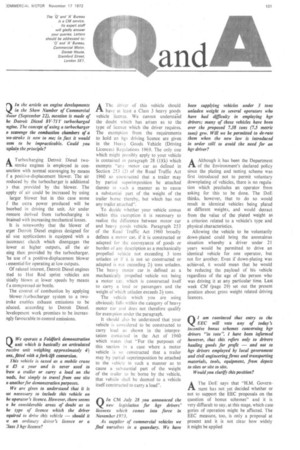in the article on engine developments
Page 107

If you've noticed an error in this article please click here to report it so we can fix it.
in the Show Number of Commercial dolor (September 22), mention is made of he Detroit Diesel 8V-71 T turbocharged ,ngine. The concept of using a turbocharger
o scavenge the combustion chambers of a wo-stroke is new to me; in fact it would :eon to he impracticable. Could you !xplain the principle?
A Turbocharging Detroit Diesel twoH. stroke engines is employed in conunction with normal scavenging by means f a positive-displacement blower. The air iroduced by the turbocharger is additional a that provided by the blower. The upply of air could be increased by using • larger blower but in this ease some f the extra power produced will be bsorbed in driving the unit. Air under ressure derived from turbocharging is Iatained with increasing mechanical losses. It is noteworthy that the blower of irger Detroit Diesel engines designed for all use applications is equipped with a iscorinect clutch which disengages the !lower at higher outputs, all the air eing then provided by the turbocharger. 'he use of a positive-displacement blower essential for operating at low outputs.
Of related interest, Detroit Diesel engines itted to Hot Rod sprint vehicles are filially blown at lower speeds by means f a compressed air bottle.
The control of combustion by applying blower /turbocharger system to a twotroke enables exhaust emissions to be educed, according to Detroit Diesel. )evelopment work promises to be increasngly favourable to control emissions.
































































































































































